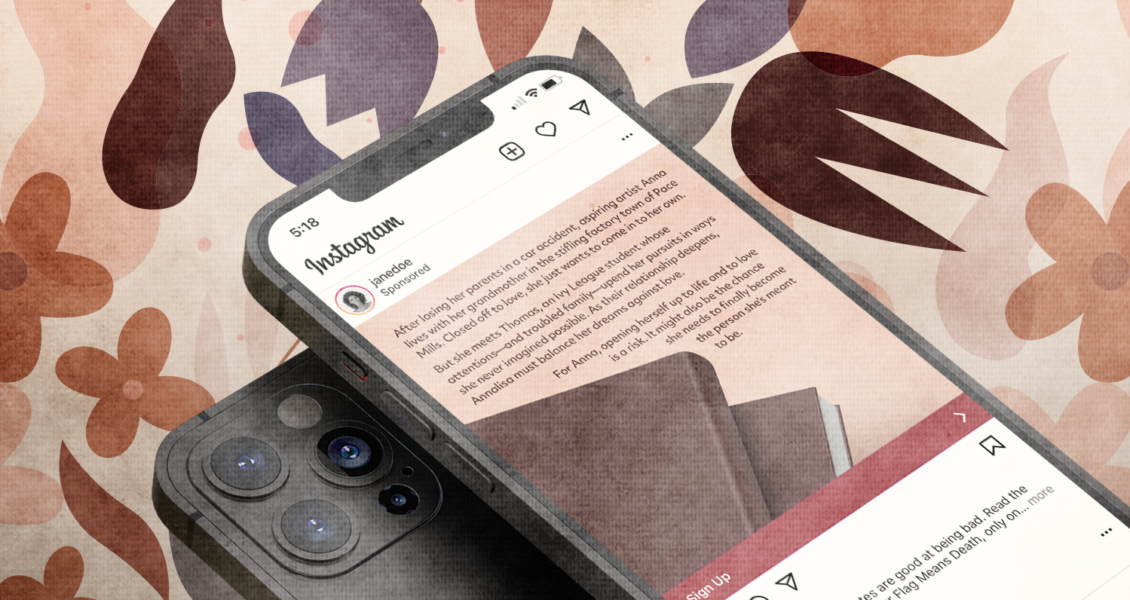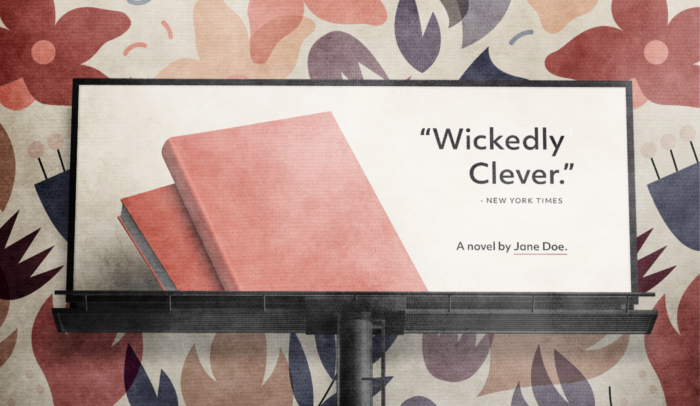This might not be what you want to hear, but after decades in book publishing and marketing, we’ve come to a clear conclusion:
For most non-fiction Authors, book ads do NOT work.
This is not what you’ll read on a lot of other blogs (written by people who haven’t sold anywhere near as many books as we have), but it’s just the truth. Book ads very rarely work.
I didn’t say that they can’t work. I said they usually don’t work.
Why not?
Because the positioning for most books is bad, and thus the ads don’t work.
You can run all the ad campaigns on Google, Amazon, and podcasts you want. You can create a fancy book trailer, contact A-list bloggers, and pay for print advertising. You could even hire a plane and skywrite your book’s name above New York City.
None of it will work if your book’s positioning sucks.
Being able to answer that question is the key to all advertising.
This post will help you determine whether you should run book advertisements at all, and if you should, I’ll show how to create one that works.
Should You Run Book Ads?
If you’re a non-fiction Author, you don’t need book ads to promote your book–at least not the typical ads you see online or in stores.
Why? Again, it all ties back to book positioning.
The vast majority of book ads are general ads made for a general audience.
But most books aren’t appealing to a general audience.
While some readers may find wealth management completely fascinating, others may have literally no interest in that topic. They’d rather read about content-based networking. (And vice versa.)
THAT is why most book ads fail. And it is why we do not (generally) recommend them for non-fiction Authors.
Ads for fiction novels, however, work somewhat better because it’s really easy to advertise to those niches.
Think about it: If you wrote a book about vampires, you could very easily make an ad that represents vampire fiction. Same goes for historical romances. You could blur out the actual book title and readers would likely still be able to guess what the genre is, and thus know if they are interested or not.
But as a non-fiction Author, you’re better off running book ads that are designed to sell YOU, not to make money on book sales—if you decide to run them at all.
Ultimately, it’s your book, and the decision is up to you. If you decide you want to create a book advertisement, we’ll walk you through how to make one that is targeted, effective, and professional.
How to Design Book Advertisements that Work
Step 1. Write and Publish a Great Book
Great advertising starts with a great product. Period. The best advertising in the world won’t save a bad book.
To write a good book, you need to know 3 things:
- Your objectives. What results will make your book a success?
- Your target audience. Who are you trying to reach, and what problems do they need solved?
- Your message. What’s your book about, and why will your audience care?
A few other things to keep in mind:
All successful books have great titles. Your title must be informative, easy to say, and attention-grabbing. People need to remember it, even if they don’t click on your ad right away.
Most book advertisements focus on creating good first impressions, but remember, the goal is to get people to read your book.
That means your book has to look professional, inside and out. Make sure it’s well-edited. Make sure the interior layout is attractive. Make sure it’s published nicely.
No one wants to read a book that gives them a headache.
Step 2. Choose Your Advertising Platform
Once you’ve completed Step 1 and have a strong book position, you should know your target audience.
Ask yourself:
- What do they read?
- What podcasts do they listen to?
- What websites do they visit?
- What stores do they frequent?
- What social media platforms do they like?
These questions will form the core of your advertising strategy.
Don’t advertise somewhere because it’s the biggest or the “best.”
Advertise on a platform that’s the best for your needs.
The platform you choose has to be dictated by your core audience. Consider the following:
- LinkedIn reaches professional audiences. It’s an excellent platform for advertising books on business, finance, or other professional topics.
- Facebook is primarily oriented toward connecting people with family and friends. One of the fastest-growing markets on the site is seniors.
- Twitter is popular with journalists, celebrities, and politicians, and many people use it as a source of news. It’s especially popular with millennials. If your book focuses on trending topics or current events, this might be a useful platform.
- Instagram is an effective visual platform with a high engagement rate, particularly among 18-29 year-olds.
- Amazon ads are based on user searches, which makes them useful for standing out among your competitors.
All this goes to say: the more you know about your audience, the easier it will be to determine where your ad will get the most engagement.
Step 3. Decide Where Your Ad Should Send People
Before you link your ad anywhere, ask yourself: What am I trying to accomplish?
If you’re aiming for more book sales, your paid digital ads should send people to your book’s Amazon page.
If you’re more interested in building an Author brand, your ads should redirect to your website or your most active social media account.
If you’re having trouble deciding where your ad should send people, consider this: there are many different ways to measure a book’s success.
Sales shouldn’t be your only goal. In fact, some of our Authors decide to give their books away for free.
Take Jeb White, for example. Jeb has given thousands of copies of his book Breaking into College away for free.
If he had focused only on sales, Jeb might have made a few thousand dollars. But by giving the book away, he added six figures to his business. He’s generated client leads for his online courses and consulting work, and he’s booked numerous public speaking engagements.
PRO TIP:
Even if you’re publishing a print advertisement, you want to encourage potential readers to take follow-up action. Consider including a QR code or a printed web link to drive readers to your landing page.
Step 4. Create a Great Amazon Listing or Landing Page
If people are excited about your advertisement and click on it, that’s great news. But your work still isn’t done.
You need them to take action. You still want them to buy your book, sign up for your newsletter, take your online course, or whatever other objective you’ve settled on.
That means that wherever the link takes them, it needs to look professional and send the right message.
If your ad takes them to the book’s Amazon listing page, make sure it includes the following elements:
- A photo of your book cover
- An enticing book description
- A high-quality author photo
- A concise and informative Author bio
- Any blurbs you may have from people respected in your field
If your ad takes people to your Author website, your landing page should be designed to lead people to action.
- Do you want them to learn more about your business methods? You might direct them to your most popular blog post.
- Do you want them to take your online video course? You might provide a short introductory video.
- Do you want them to buy your nutritional supplements? You might offer them a free sample.
Again, look back at your overall objectives. How can your landing page help you achieve them?
Step 5. Design the Ad
Unless you’re a professional designer, you should hire someone to design the ad for you.
Graphic designers’ fees range widely.
You can hire someone cheaply through sites like Upwork or Fiverr, but you usually get what you pay for.
We’ve all seen bad ads online. Would your ideal reader want to click them?
No.
You’re better off paying more and getting a professional advertisement. Otherwise, you’ll be throwing your money away on an ad no one engages with.
Find a designer that will show you samples and, ideally, one who’s worked with book advertising before.
To design a great ad, your designer will need to know all the information you’ve developed during the previous 4 steps:
- Who the ad is targeting
- How your book will help them
- Where the ad’s going to be placed (your platforms)
- The landing page it will link to
You can give the designer your book cover and author photo for possible graphics or inspiration for the ad.
It’s also helpful to show them other advertisements, book covers, or designs you like. This will give them a better idea of the overall style you want.
Before you forge ahead, be aware. Your designer will need one more thing before they can get to work: copy.
What words are actually going to be on the ad?

Your advertising copy isn’t the same as your book description. When you look at an ad, do you want to read a whole paragraph?
No.
Nothing will make a potential customer scroll past faster.
Advertising copy is short and catchy.
Think about the logline of a movie—a single sentence or phrase that immediately makes you want to watch a film.
Your book ad will require a memorable tagline or a super brief description of the book. It should be just long enough to pique a reader’s interest.
Remember, the goal is to have them click through to learn more.
If you think you can manage this, you can write the copy yourself.
If not, I recommend hiring a professional. Copy plays a big role in convincing someone to click on your ad or read your book, so you need to get it right.
A professional copywriter’s fees will range anywhere between $5 and $300. Like with graphic design, though, you get what you pay for.
If you want an effective ad, don’t skimp on the important stuff.


